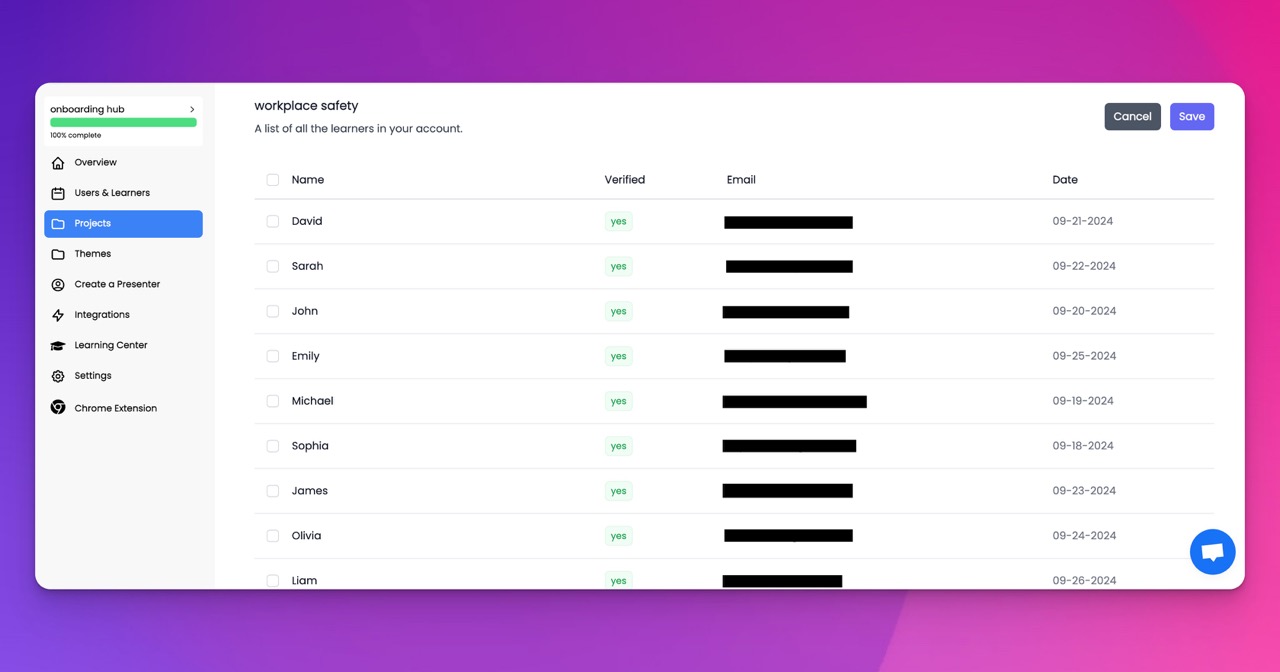🎉 Trainday now integrates with Zendesk and Hubspot 🎉 Trainday now integrates with Zendesk and Hubspot 🎉 Trainday now integrates with Zendesk and Hubspot
🎉 Trainday now integrates with Zendesk and Hubspot
🎉 Trainday now integrates with Zendesk and Hubspot
Contact
Cultivating Curiosity: Strategies to Foster a Learning Mindset Among Employees
In today's rapidly evolving business landscape, fostering a learning mindset among employees is crucial for sustained growth and innovation. This involves creating an environment where continuous learning is encouraged, valued, and integrated into the very fabric of the organization. This blog post will explore strategies to foster a learning mindset, emphasizing the role of data-driven training content to enhance employee development.
Embracing a Culture of Learning
At the heart of fostering a learning mindset is the establishment of a culture that celebrates and supports continuous education and personal growth. This culture should permeate every level of the organization, starting from leadership.
1. Lead by Example
Leadership plays a pivotal role in setting the tone for a learning culture. When leaders actively engage in learning activities and share their experiences, it sends a powerful message about the value placed on continuous learning.
2. Create a Safe Environment for Learning
Encourage an environment where employees feel safe to ask questions, take risks, and learn from their mistakes. This involves promoting a non-punitive approach to errors and viewing them as opportunities for learning and growth.
3. Personalize Learning Experiences
Utilize data analytics to understand each employee’s learning style, preferences, and career aspirations. This information can be used to create personalized learning paths, making learning more relevant and engaging for each individual.
4. Integrate Learning into Daily Work
Make learning an integral part of everyday work activities. This could involve setting aside time for learning, integrating learning tasks into job roles, and encouraging employees to apply new skills and knowledge in their day-to-day work.
5. Provide Diverse Learning Opportunities
Offer a variety of learning formats to cater to different learning styles and preferences. This includes online courses, workshops, seminars, webinars, mentorship programs, and self-study resources.
6. Encourage Collaboration and Knowledge Sharing
Foster a collaborative environment where employees are encouraged to share knowledge and learn from each other. This can be achieved through team-based learning projects, peer-to-peer coaching, and collaborative learning platforms.
7. Recognize and Reward Learning Efforts
Recognizing and rewarding learning efforts and achievements can greatly motivate employees. This could be in the form of certificates, awards, public recognition, or opportunities for career advancement.
8. Utilize Data for Continuous Improvement
Regularly collect and analyze data on learning programs and employee performance. This data should be used to continuously improve the learning content, methods, and strategies to ensure they remain effective and aligned with organizational goals.
9. Encourage Reflective Practices
Encourage employees to reflect on their learning experiences and outcomes. Reflection helps in consolidating learning, understanding its application, and identifying areas for further development.
Conclusion
Fostering a learning mindset among employees is a dynamic and ongoing process. It requires commitment from all levels of the organization, particularly from leadership. By creating a supportive learning environment, personalizing learning experiences, and utilizing data-driven strategies, organizations can cultivate a culture of continuous learning. This not only enhances employee skills and knowledge but also drives innovation, adaptability, and long-term success in an ever-changing business world.
Accelerate Compliance.
Deliver OSHA-Ready Courses Instantly.
Empower your team with data-driven training solutions tailored to your industry's safety standards. Stay compliant, reduce risks, and boost productivity with AI-powered course creation.
